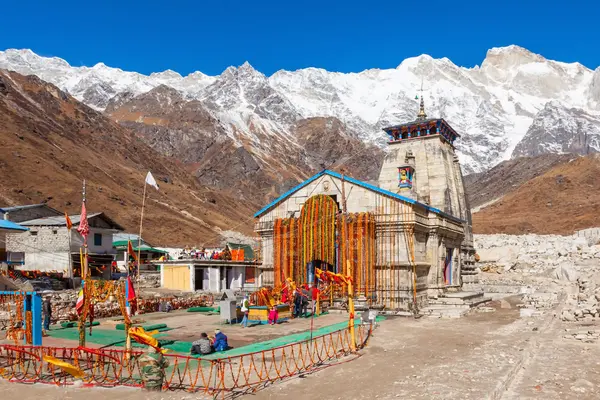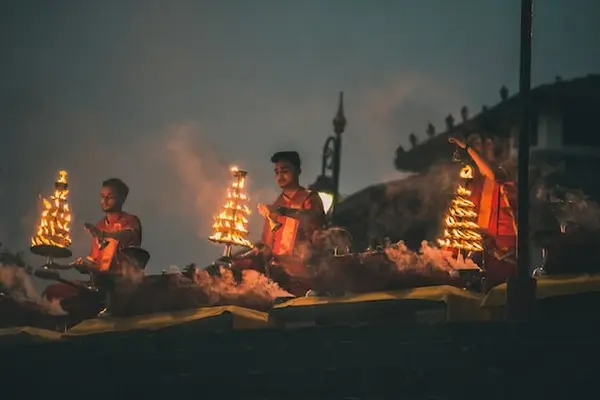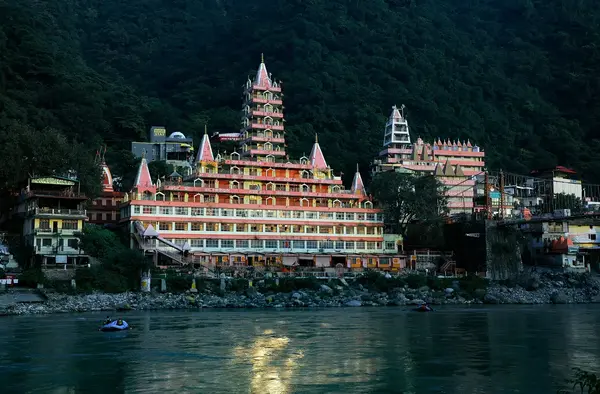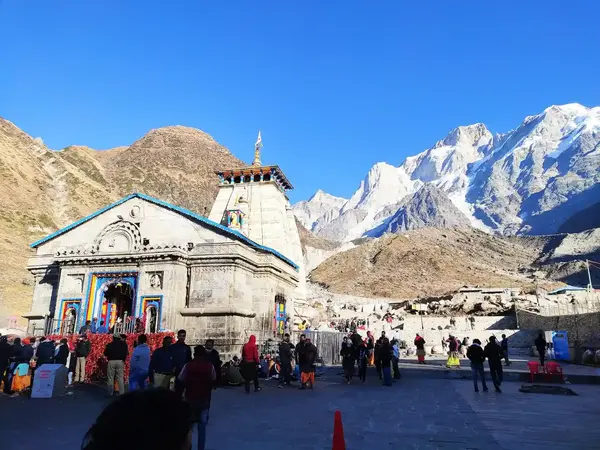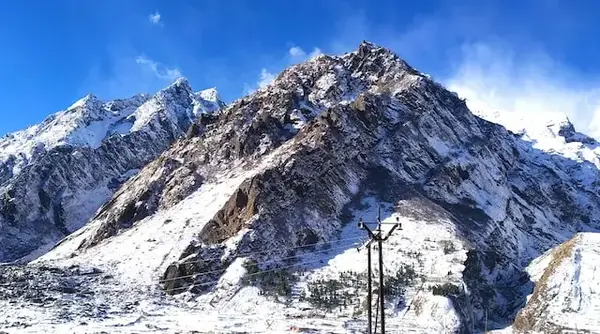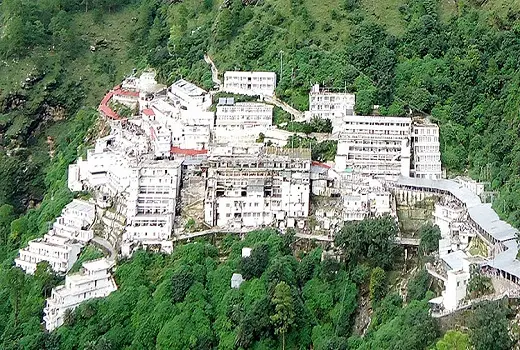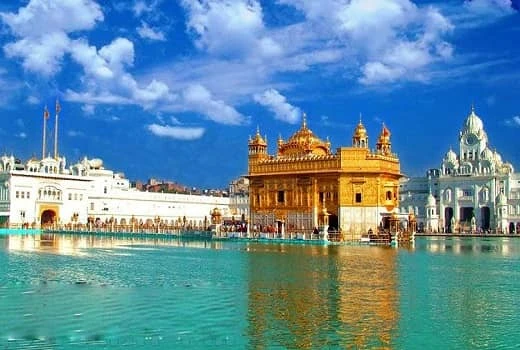- 06N/07D
Overview
The Vaishno Devi temple is recognized as one of the "Shakti Peeths" of goddess 'Durga'.
Shri Mata Vaishno Devi Shrine is one of the oldest shrine of India, located at a height of 5300 feet on the holy Trikuta Hills of the Shivalik Hill Range.
The Holy cave is 13 Kms from the Base Camp Katra. The Town Katra is 50 Kms away from Jammu and 35 Kms from District HQ Udhampur and is linked by road. The Mata Vaishno Devi Shrine is one of the most popular Shrines of India.
Katra Mata Vaishno Devi Darbar (by foot 14.5 k.m.)
This is a small town around 50 kms from Jammu. It is the entry point for pilgrims visiting the world-famous shrine of Vaishno Devi. The pilgrims are expected to take a trek of around 15 km to visit the shrine from Katra. Although a tedious trek, it has scenic and picturesque surroundings and a climate that is pleasant enough to go with the faith of the pilgrims.
Shri Mata Vaishno Devi Shrine is one of the oldest shrines in India, located at a height of 5300 feet in the holy Trikuta Hills of the Shivalik Hill Range. The Holy Cave is 13 kms from the Katra Base Camp. The town of Katra is 50 kms away from Jammu and 35 kms from the District HQ of Udhampur and is linked by road. The Mata Vaishno Devi Shrine is one of the most popular shrines in India.
The Goddess Mata Vaishno Devi's abode is in a 100-foot-long cave with a narrow opening. The holy cold and crystal clear water washes the lotus feet of the Mata's "Pindian". There are three natural pindies representing Maha Sarswati, Maha Lakshmi, and Maha Kali, which represent the creative, preservative, and destructive aspects of the Super Power. It is an ancient shrine whose references are found in the Vedas and other ancient scriptures.
It is recognised as one of the "Shakti Peeths" of the goddess 'Durga'. This holy shrine of Mata Vaishno Devi, which is situated in the folds of the mighty "Tirkuta" Hills, attracts lakhs of devotees from all parts of India and abroad. People who visit the shrine constitute a heterogeneous profile, comprising wealthy and poor, aged and young, males and females from within and outside the country. The shrine of goddess 'Vaishno Devi' is reached by an arduous climb.
The scenic beauty, the landscape around them, and the constant chanting of "Jai Mata Di" leave a mystic effect on the devotees. At the culmination of their pilgrimage, the devotees are blessed with the 'Darshans' of the deity in her three manifestations as three Pindies, located inside the sanctum-sanatorium, which is open for the devotees throughout the year in all seasons.
Witnessing the devotion of devotees who are moved to tears by three words chanted throughout the ages is a spiritually uplifting experience.
At Darshani Darwaza, 1 km from Katra, the Goddess disappeared. This place is called Darsani Darwaza because the Trikut mountain is visible from here Tikuta Parvat consists of three high peaks that are the abodes of the Goddess Vaishno Devi.
The Sri Ram Temple is near Vaishno Devi Cave. There is a Shiva-linga in a cave 125 steps down from the Ram Temple.
This temple is about 2.5 km from Vaishno Devi Cave, at about 6,700 feet. It is traditional to visit this temple after visiting the Vaishno Devi Temple. Bhairon (Bhairav) was absolved of all sins when Durga killed him. When Bhairon was killed by the Goddess, his head flew to this place. There is a huge stone outside the cave that represents the body of Bhairon. After he was killed, he prayed to the Goddess to forgive him. It is said that the Goddess gave the benediction that the desires of her devotees who visit this place would be fulfilled.
This is where the Goddess stopped for some time while Bhairon was chasing her. Her footprints are supposed to be visible on a stone at this place. Charanpaduka means " holy footprints." It is about 1.5 km from Ban Ganga at 3,380 feet.
After the Goddess left the Bhumika Temple, she went to the Trikuta Hills, passing through here. At this time, Langoor Vir (Veer Langur) felt thirsty. The Goddess shot an arrow into the stone and a holy river was born, now known as Ban Ganga. It is called Ban Ganga because the Goddess washed her hair at this place. Most pilgrims take baths here. You must show the slip you got near the bus stand in Katra to pass this point. Ban Ganga is about 3 km from Katra.
Ardh Kuwari is the halfway point and some pilgrims stay here for the night. There is a 15-foot-long cave called Garbha Joon where the Goddess hid herself for nine months and showed herself to a saint. The cave is narrow, and you have to almost crawl all the way through it. When Bhairon entered the cave, the goddess made a new opening with her trident and ran away. Ardh Kuwari is 4.5 km from Charan Paduka and 4,800 ft above sea level.
For 2.5-km after Ardh Kuwari, the path gets very steep. This ascent is called the Hathi Matha ascent, because the mountain is shaped like the forehead of an elephant. It is best to use the footpath rather than the stairs, as the climb will be easier. From here, it's another 1,500-foot climb to Sanjhi Chatt, and then another 4-kilometer hike to the carving.
Tour Schedule
-
- Itinerary : Night Journey
- Departure : 6.40 P.M.
-
- Arrival : 09.00 A.M.
- Itinerary : Two Hours Rest 14 km. trekking / By pony to Bhawan
- Departure : 11.00 A.M.
-
- Itinerary : After Mata Darshan Arr. and rest.
- Departure : 6.00 P.M.
-
- Arrival : 8:00 A.M.
Book Packages With TravelsMoon
Get the Best Deals on the TourPackages!
Verified Travel Agent.

Customized itinerary.

